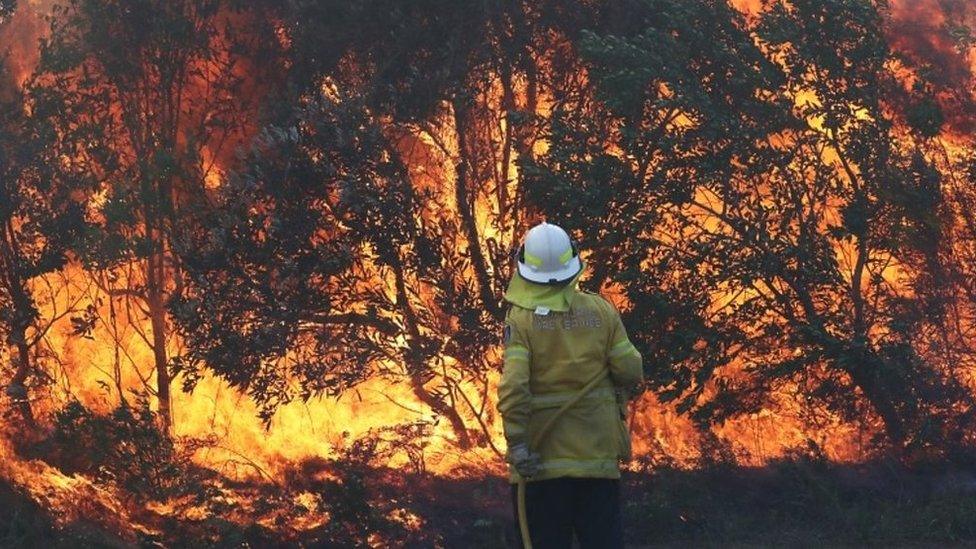Australia bushfires: Record number of emergencies in New South Wales
- Published
"Unprecedented" bushfires turn skies orange
Australian authorities say an "unprecedented" number of emergency-level bushfires are threatening the state of New South Wales (NSW).
More than 80 blazes were raging across the state on Friday.
Gusty winds and up to 35C heat have exacerbated the fires, many of which are in drought-affected areas.
There are reports of people trapped in their homes in several places, with crew unable to reach them due to the strength of the fires.
"We are in uncharted territory," said Rural Fire Service Commissioner Shane Fitzsimmons. "We have never seen this many fires concurrently at emergency warning level."
At one point, 17 emergency-level fires were burning simultaneously across NSW.
But fire authorities said that falling temperatures, increases in humidity and helicopter assistance were helping with efforts to tackle the blazes.
What's the latest?
Authorities have deployed more than 1,000 firefighters and 70 aircraft to save "as many people as possible", Mr Fitzsimmons said.
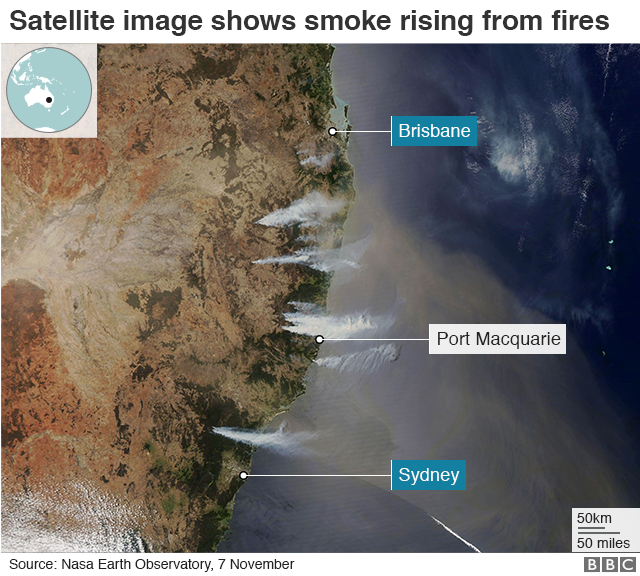

The Rural Fire Service tweeted on Friday that "due to the size and speed of the fires we couldn't get to everyone, even by road or helicopter", external. The blazes are spread across about 1,000 km (621 miles) of Australia's coast, stretching the emergency response.
Some people were warned to seek shelter from fires rather than flee, as it was now too late to leave.
Emergency warnings were also issued on Friday for bushfires burning in Queensland and Western Australia.
Allow X content?
This article contains content provided by X. We ask for your permission before anything is loaded, as they may be using cookies and other technologies. You may want to read X’s cookie policy, external and privacy policy, external before accepting. To view this content choose ‘accept and continue’.

In NSW, the worst-hit state, crews have fought hundreds of fires since September. Last month, two people died while trying to protect their home.
Last week, one blaze burned though 2,000 hectares of bush which contained a koala sanctuary. Hundreds of the animals were feared to have died.
More than half the koalas living at another sanctuary may have also been killed by wildfires, according to charity Koala Conservation Australia.
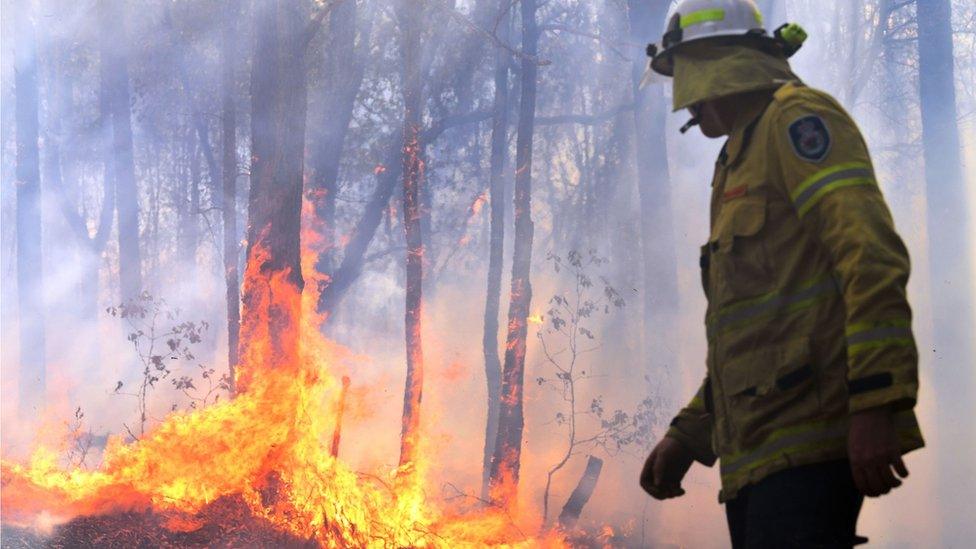
The fires have affected both inland and coastal areas in the state's north-east
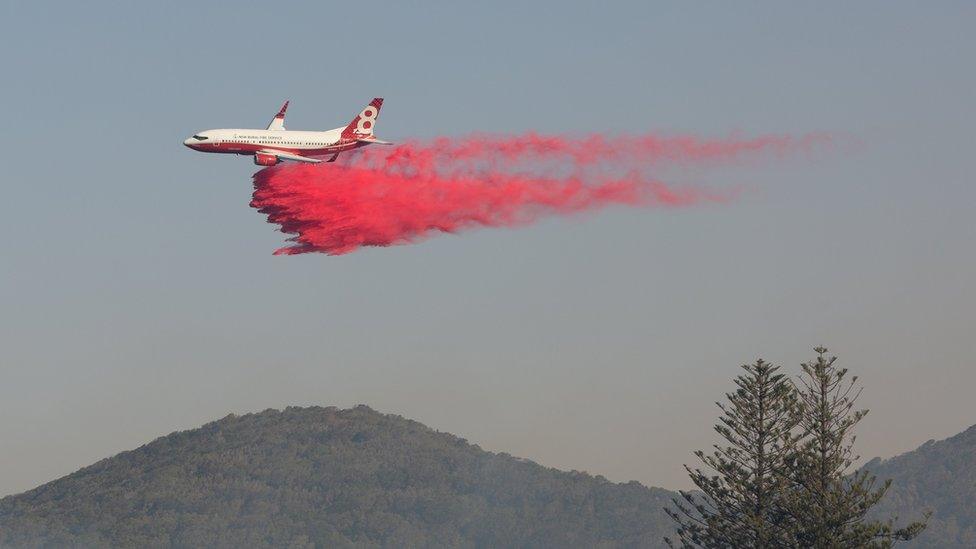
An aircraft drops fire retardant near the town of Forster
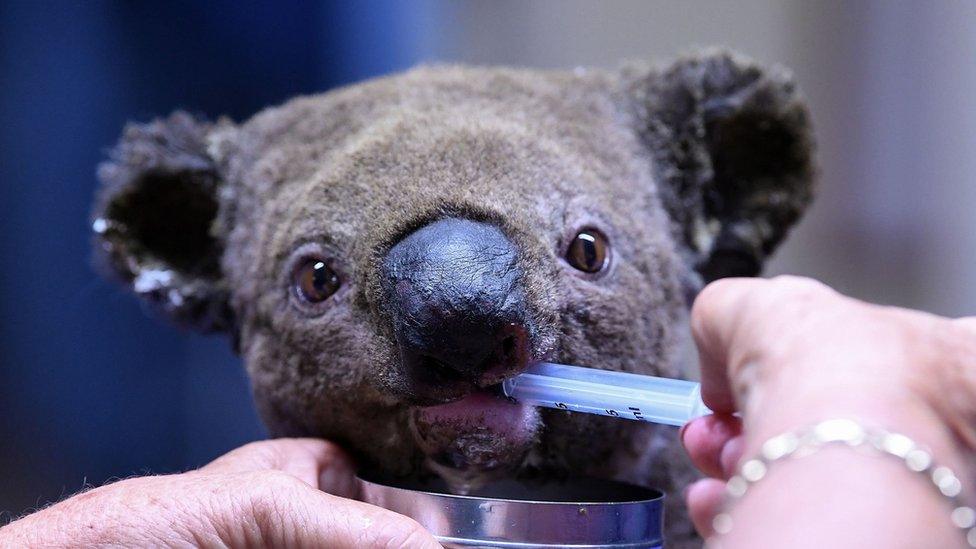
Wildlife rescuers were able to save some injured koalas from a deadly fire
What about the drought?
Rains lashed NSW earlier this week, providing much relief to farmers. But the storms were not nearly enough to end the long-running drought.
Authorities in the state warn that many fires will continue to burn unless there is more rain.
"We just cannot overstate the profound impact that the drought is having on fire behaviour," Mr Fitzsimmons said.
Water-bombing aircraft are often flying long distances because of the difficulty of accessing water in dry areas. In some cases authorities have drilled bores to keep up with demand.
"We've very mindful of the scarcity of water and how precious it is but the reality is we can't do firefighting without water," Mr Fitzsimmons said.
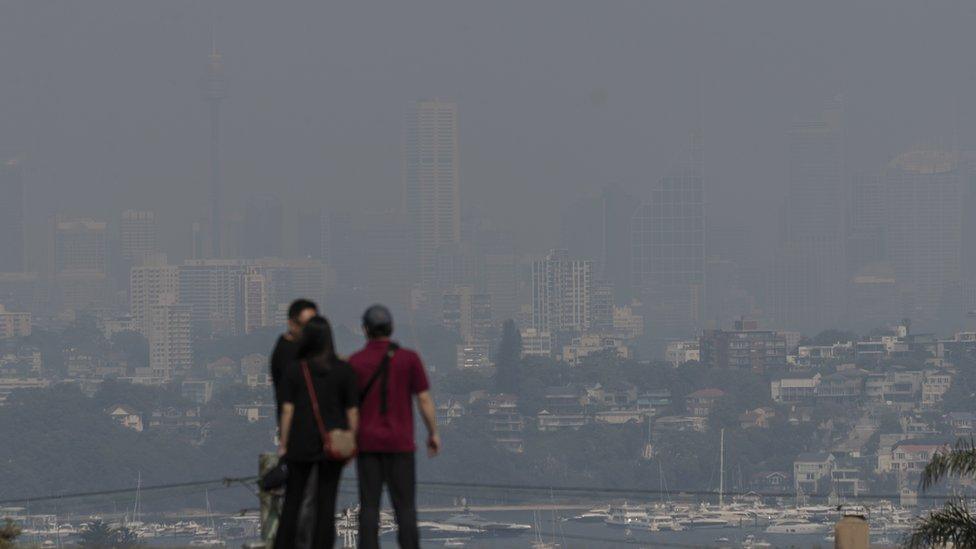
Strong northerly winds shrouded Sydney in smoke from the bushfires
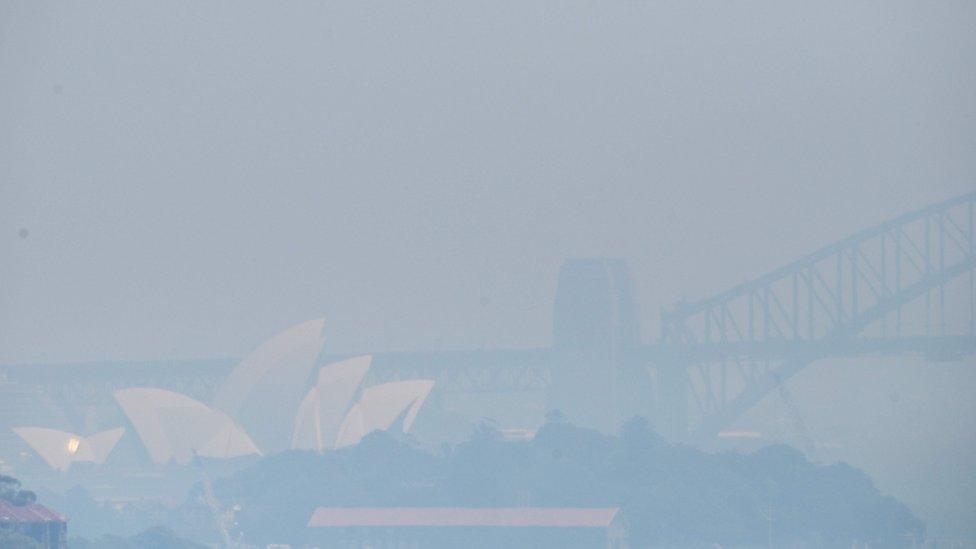
The haze obscured the city's most famous landmarks

Last week, Sydney was blanketed by smoke for days due to fires in Port Macquarie - a region 380km away.
The poor air quality prompted health warnings for those with asthma and other respiratory problems.
Is this linked to climate change?
Australia's fire season risks growing longer and more intense due to climate change, according to scientists.
Authorities said they were concerned about the severity of the fires ahead of its hottest months, a year after the nation experienced its warmest summer on record.
Why Australia bushfires are now "hotter and more intense"
Officials have confirmed that 2018 and 2017 were Australia's third and fourth-hottest years on record respectively.
The bureau's State of the Climate 2018 report said climate change had led to an increase in extreme heat events, external and increased the severity of other natural disasters, such as drought.
Even if global temperatures are contained to a 2C rise above pre-industrial levels - a limit set out in the landmark Paris accord, agreed by 188 nations in 2015 - scientists believe the country is facing a dangerous new normal.
Last year, a UN report said Australia was falling short in efforts to cut its CO2 emissions.
- Published9 October 2019
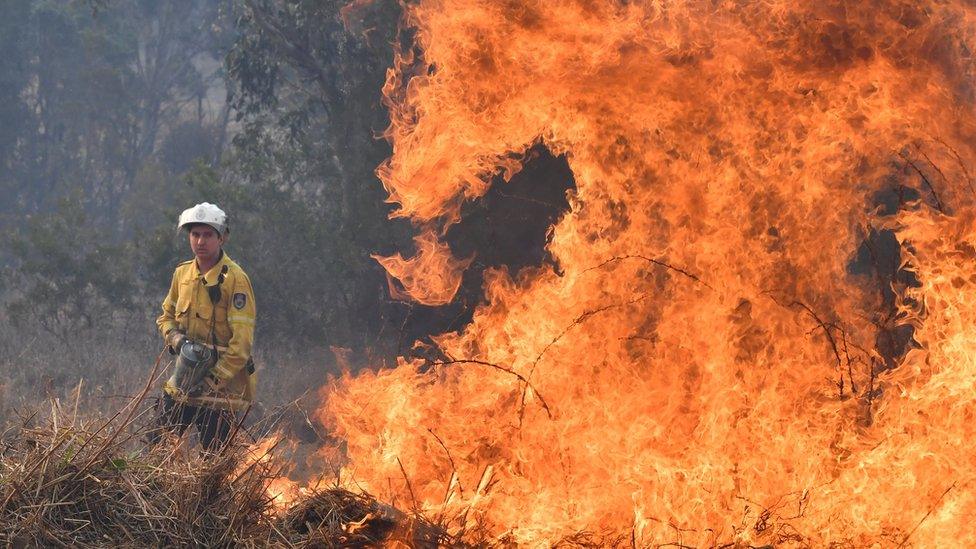
- Published8 September 2019
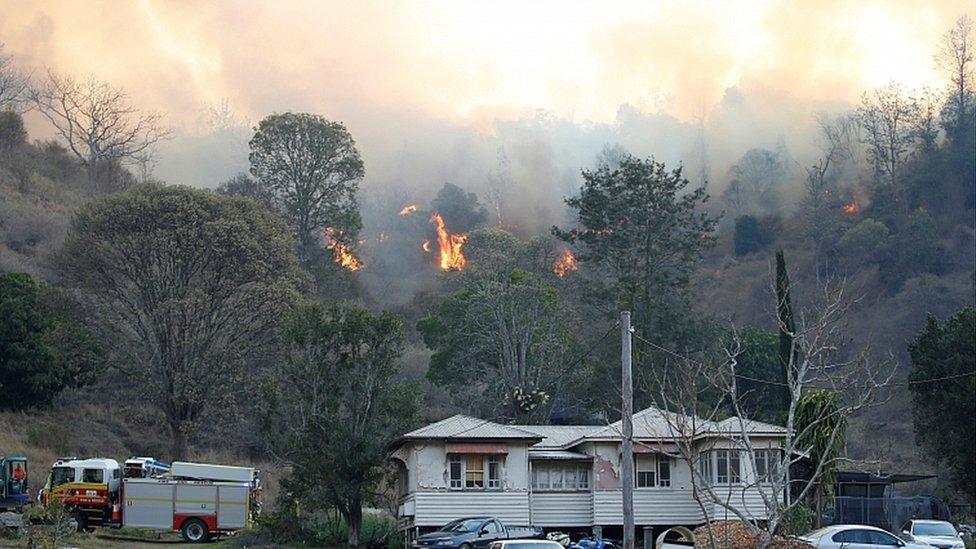
- Published12 September 2019
